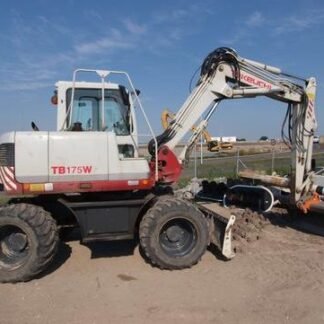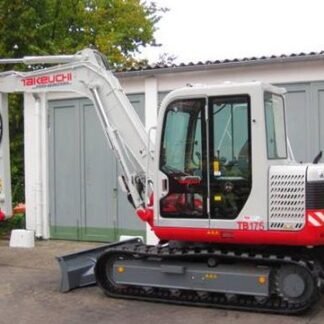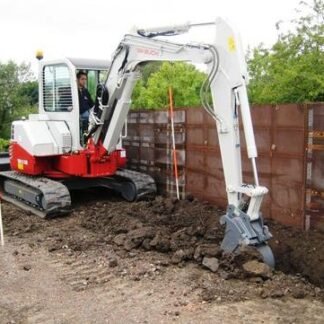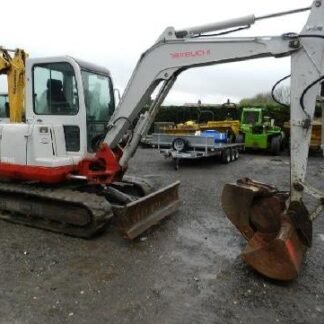
In the world of heavy machinery, having a reliable and detailed manual is crucial, particularly for equipment like those produced by Takeuchi. Whether you’re a seasoned operator or a novice in the field, understanding how to effectively utilize a Takeuchi manual can save you time and money. This article will guide you through the process of using a Takeuchi manual to make repairs right now, ensuring your equipment functions at its best. From understanding the structure of the manual to the tools you’ll need, and from step-by-step problem-solving to navigating common repair scenarios, we’ve got you covered.
Understanding Your Takeuchi Manual’s Structure
The first step in leveraging your Takeuchi manual for repairs is to understand its structure. Typically, these manuals are divided into several key sections, including an introduction to the equipment, detailed diagrams, troubleshooting guides, maintenance schedules, and step-by-step repair instructions. Each section is designed to provide specific information that can help you diagnose issues and perform repairs efficiently. Familiarizing yourself with the table of contents is crucial as it allows you to quickly locate the information you need.
Another important aspect of the manual is the index, which can be a lifesaver when you’re in a hurry. The index will help you find specific topics or components, saving you time flipping through pages. Additionally, pay attention to the glossary of terms, which can clarify technical jargon or abbreviations you may not be familiar with. Understanding these elements will enhance your ability to effectively use the manual during repairs.
The diagrams and illustrations within the manual are particularly valuable. They provide visual representations of components and systems, making it easier to understand how parts fit together and function. Takeuchi manuals often include exploded views of assemblies, which can be instrumental when disassembling and reassembling parts. Make sure to study these diagrams closely as they can reveal hidden components or connections that are not immediately obvious.
Lastly, the troubleshooting section is a critical part of the manual. It outlines common issues and provides guidance on diagnosing problems based on symptoms. This section is usually organized in a logical sequence, starting from the most straightforward solutions to more complex ones. By understanding how to navigate this section, you can quickly identify potential causes of a problem and determine the appropriate course of action.
Essential Tools Required for Effective Repairs
To perform repairs on your Takeuchi equipment, having the right tools on hand is essential. The manual often lists the necessary tools for various repair tasks, which can include basic hand tools like wrenches, screwdrivers, and pliers. Additionally, you may need specialized tools that are specific to Takeuchi machinery, such as hydraulic pressure gauges or diagnostic software interfaces. Ensuring you have these tools available will streamline the repair process and help prevent unnecessary delays.
Investing in quality tools is also important. Durable, high-quality tools not only make repairs easier but also reduce the risk of damage to your equipment. Consider purchasing tools from reputable brands known for their reliability. Additionally, maintaining your tools in good condition by cleaning and storing them properly will extend their lifespan and ensure they are ready for use when needed.
Safety equipment is another critical component of your repair toolkit. Depending on the nature of the repair, you may need protective gear such as gloves, safety glasses, and steel-toed boots. The manual may outline specific safety precautions for certain repairs, so it’s important to follow these guidelines to protect yourself from injury. Always prioritize safety and never attempt a repair without the appropriate protective equipment.
Finally, having a well-organized workspace can significantly impact the efficiency of your repair efforts. A clean, well-lit area with ample space to lay out tools and parts will make it easier to follow the manual’s instructions. Consider setting up a dedicated repair station with storage for your tools and equipment, making it easy to access everything you need when a repair arises.
Step-by-Step Guide to Immediate Problem Solving
When faced with a malfunctioning piece of Takeuchi equipment, a methodical approach to problem-solving is essential. Begin by consulting the troubleshooting section of your manual, which is designed to help you identify issues based on specific symptoms. This section often provides a flowchart or checklist that guides you through a series of diagnostic steps, helping you pinpoint the root cause of the problem.
Once you have identified the issue, consult the relevant repair section in the manual. This part of the manual provides detailed instructions on how to perform the repair, often accompanied by diagrams or illustrations. Follow these instructions carefully, taking note of any special tools or safety precautions mentioned. It’s crucial to adhere to the recommended procedures to ensure the repair is performed correctly and safely.
During the repair process, take your time and work methodically. Rushing through a repair can lead to mistakes or oversight, which may exacerbate the issue or result in additional problems. If you encounter difficulties or uncertainties, refer back to the manual or consult with a professional for guidance. The manual is designed to be a comprehensive resource, so utilize it to its fullest potential.
After completing the repair, conduct a thorough test of the equipment to ensure the issue has been resolved. The manual may include post-repair testing procedures or checks to verify the success of the repair. Document the repair process and any parts replaced for future reference. This documentation can be valuable for tracking the maintenance history of your equipment and identifying recurring issues.
Common Repair Scenarios and Manual References
Takeuchi equipment, like any machinery, is susceptible to a range of common repair scenarios. Understanding how to address these scenarios using the manual can significantly enhance your repair efficiency. For instance, issues with the hydraulic system are common in heavy machinery. The manual typically provides detailed instructions on diagnosing hydraulic leaks, pressure issues, or component failures, guiding you through the necessary repair steps.
Another frequent issue is engine-related problems, such as starting difficulties or performance issues. The manual will often include a dedicated section for engine diagnostics and repairs, outlining potential causes and solutions. By following the manual’s instructions, you can systematically address these problems, ensuring the engine operates smoothly and reliably.
Electrical system malfunctions are also common in Takeuchi machinery. These issues can range from faulty wiring to sensor failures. The manual will provide wiring diagrams and troubleshooting guides to help you identify and rectify electrical problems. It’s important to approach electrical repairs with caution, following the manual’s safety guidelines to prevent accidents or equipment damage.
Finally, regular wear and tear on components such as tracks, belts, or bearings can lead to performance issues. The manual will often include maintenance schedules and procedures for inspecting and replacing these parts. By adhering to these guidelines, you can prevent minor issues from escalating into major repairs, prolonging the lifespan of your equipment.
In conclusion, effectively using a Takeuchi manual is an invaluable skill for anyone responsible for maintaining and repairing heavy machinery. By understanding the manual’s structure, gathering the necessary tools, following a step-by-step problem-solving approach, and familiarizing yourself with common repair scenarios, you can ensure your equipment remains in optimal condition. For more detailed guidance and access to specific Takeuchi manuals, visit Takeuchi Manuals. With the right knowledge and resources, you can tackle repairs with confidence and efficiency, minimizing downtime and maximizing productivity.





